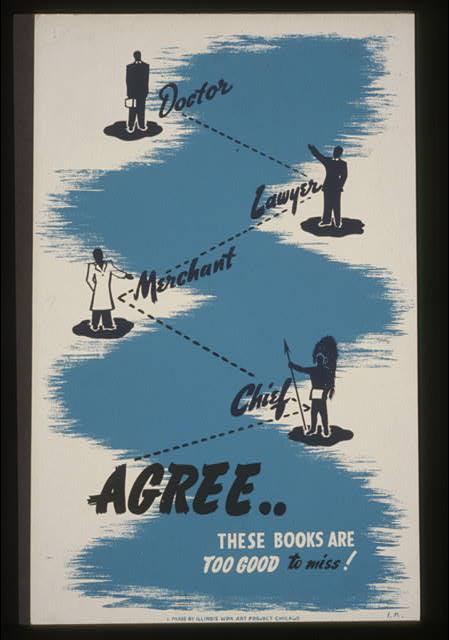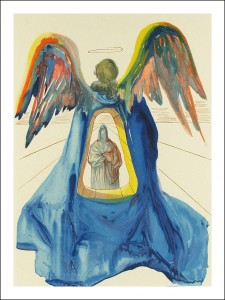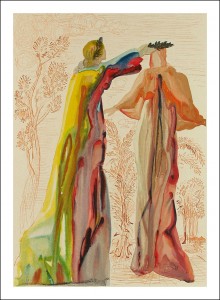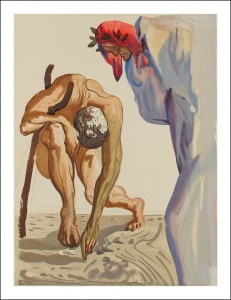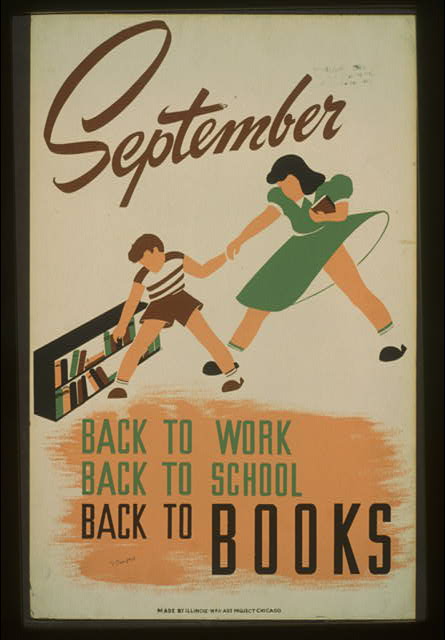April 22, 2013 at 2:36 pm
The Core presents the original English version of an article that was published in the April 2013 issue of Hiatus, la revue. Here is an extract:
Punctuation, as any dictionary will tell you, consists of the marks that dance around the letters of a text to mark clauses, sentences and inflection. What, though, is minimal punctuation? Is it in the range of marks that a writer uses? Ernest Hemingway wrote famously minimalist prose, for instance, where marks such as the semicolon (;), the ellipsis (…) and the dash (–) are notable mostly for their absence. The Old Man and the Sea contains but one colon and one exclamation mark, and is none the worse for it.
...
Writing in ancient Greece was broken by neither marks nor spaces. Lines of closely-packed letters ran left to right across the page and back again like a farmer ploughing a field. The sole aid to the reader was the paragraphos, a simple horizontal stroke in the margin that indicated something of interest on the corresponding line. It was up to the reader to work out what, exactly, had been highlighted in this fashion: a change of topic, perhaps; a new stanza in a poem; or a change in speaker in a drama.
...
Punctuation itself – literally, the act of adding “points” to a text – did not arrive until the third century BC, when Aristophanes of the great Library at Alexandria described a series of middle (·), low (.) and high points (˙) denoting short, medium and long pauses. Over the centuries, this system gave rise to punctuation as we know it: from Aristophanes’ three dots came the colon, the full stop, and many other marks besides. At the same time the paragraphosevolved into the “pilcrow”, a C-shaped mark (¶) placed at the start of each new section in a text. The word space was a late arrival, appearing only when monks in medieval England and Ireland began splitting apart unfamiliar Latin texts to make them easier to read.
For the full article, visit bit.ly/12CmatU.
By mdimov
|
Posted in Academics, Core Authors, Future of the Book, Great Questions
|
Tagged Ancient Greek, Beat, cut, Greek, Irish, language, Latin, punctuation, rhythm
|
April 22, 2013 at 10:00 am
The Core presents an interesting feature from Times Higher Education, in which they offer their insight on what the causes, and possible consequences, of the rise of "creative writing" may be. Here is a sample:
Despite the speed and apparent smoothness with which creative writing has become incorporated into English departments, or (especially in the US) as a separate department alongside English, its institutionalisation is complex and deceptive. It is obvious, however, that its recent and remarkable expansion is closely bound up with the marketisation of higher education, especially in the US and the UK. Once you start thinking of “the student” as “the customer”, and once the customer’s own preferences are “prioritised” (to echo the business-speak that has come to prevail), it is inevitable that you should expect to see more courses in creative writing than in, say, medieval English prose or 18th-century pastoral verse.
In important (if insufficiently acknow-ledged) respects, the recent expansion of creative writing testifies to a peculiar restoration of a conception of writing as personal self-expression. As scholar and consultant Robert Rowland Smith comments in On Modern Poetry: From Theory to Total Criticism (2012): “We’re at a point where more poetry is being written than published, let alone read, mainly because poetry has come to be considered so much as an outlet for personal feelings - the poem as the stylized mode of the journal entry. Even among poems that do get published - and there is a parallel with recent art - the emphasis on the recording of subjective experience is overwhelming.”
Leave all your worries about otherness - the unconscious, death, not to mention poverty and injustice, the environment, etc - behind. Come and join the world of self-affirming, self-expressive creative writing. In all of this it would be easy to concur with American literary critic Mark McGurl’s characterisation of the rise of creative writing. As he shows in The Program Era: Postwar Fiction and the Rise of Creative Writing (2009), writing has become overwhelmingly “the product of a system”.
But this is only one way of construing the rise of creative writing.
To read the full feature, visit bit.ly/Yb4EYW.
By mdimov
|
Posted in Academics, Art, Community, Future of the Book, Great Questions
|
Tagged article, artist, author, creative, essay, feature, personal, system, THE, Times Higher Education, tool, writing
|
